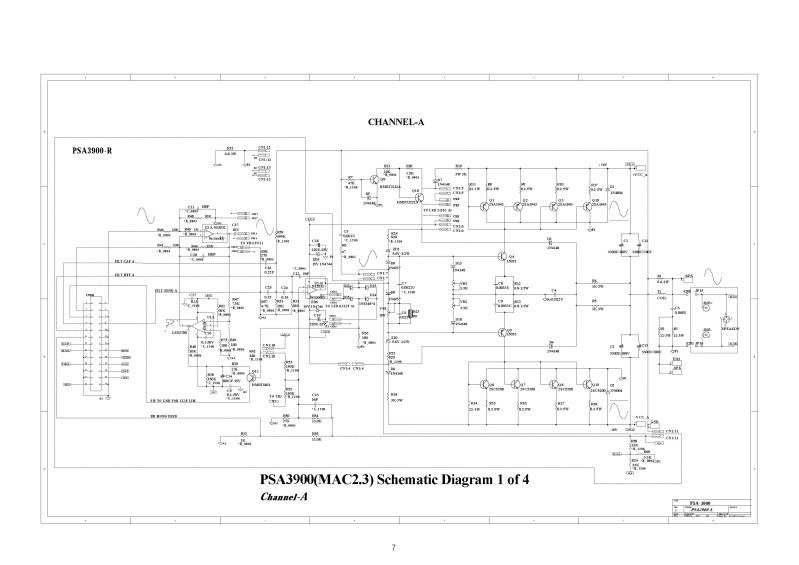Hi,
I'm trying to repair a transistor stereo amplifier. It's an Alto MAC 2.3 and I'm using it in my studio. A few days ago I rented it to some friends but they blew it in their live!
Anyway, I changed all the output transistors 8 pairs of 2SC5200/2SA1943 in both channels, but...
One channel is working great but at the other channel I have noise. When I was having the amp on the bench and trying to find where is this noise from using an o'scope I found out that it's on the supply rails. Then one more pair of power transistors blew out.
I took off all of them from this channel and measured the existing ones to be sure that I can use them again.
I powered up the amp without the outup transistors of this channel and everything works fine! Then I soldered a pair to keep safe the other ones... they're a little bit expensive... and carefully I scoped the noise. It's an oscillation around 6-8Vp-p @ 1000KHz! I have no idea what is this!? And, you can scope it at the output too.
Checked all the components and everything looks fine. Checked all the small transistors, diodes, resistors etc
Unfortunately, I don't have a schematic. Asked from Alto to send me one and they send me from the newer version MAC 2.3 MKII that it's different.
Any help? Without the power transistors I have a perfect sinewave at the drivers. But with a pair of powers I have that noise at the output. It's loud when I plug a speaker. Hope someone has something in mind....
I'm trying to repair a transistor stereo amplifier. It's an Alto MAC 2.3 and I'm using it in my studio. A few days ago I rented it to some friends but they blew it in their live!

Anyway, I changed all the output transistors 8 pairs of 2SC5200/2SA1943 in both channels, but...
One channel is working great but at the other channel I have noise. When I was having the amp on the bench and trying to find where is this noise from using an o'scope I found out that it's on the supply rails. Then one more pair of power transistors blew out.
I took off all of them from this channel and measured the existing ones to be sure that I can use them again.
I powered up the amp without the outup transistors of this channel and everything works fine! Then I soldered a pair to keep safe the other ones... they're a little bit expensive... and carefully I scoped the noise. It's an oscillation around 6-8Vp-p @ 1000KHz! I have no idea what is this!? And, you can scope it at the output too.
Checked all the components and everything looks fine. Checked all the small transistors, diodes, resistors etc
Unfortunately, I don't have a schematic. Asked from Alto to send me one and they send me from the newer version MAC 2.3 MKII that it's different.
Any help? Without the power transistors I have a perfect sinewave at the drivers. But with a pair of powers I have that noise at the output. It's loud when I plug a speaker. Hope someone has something in mind....


Comment